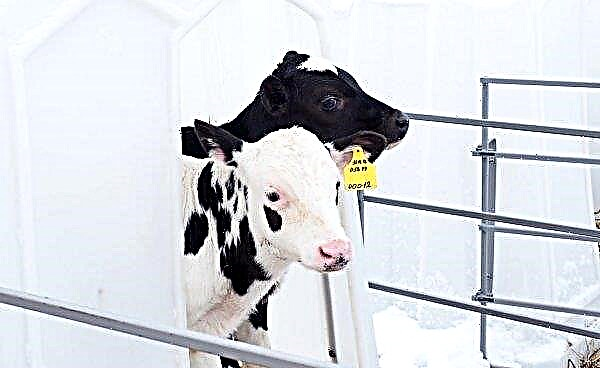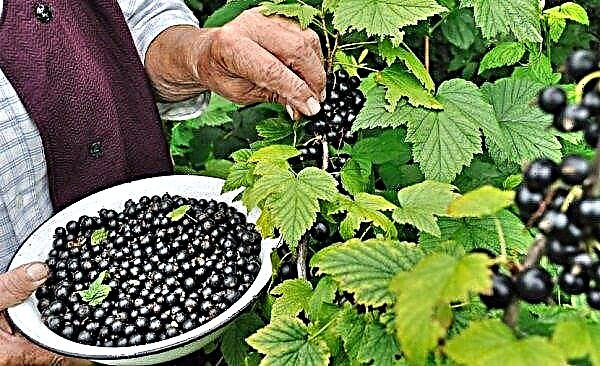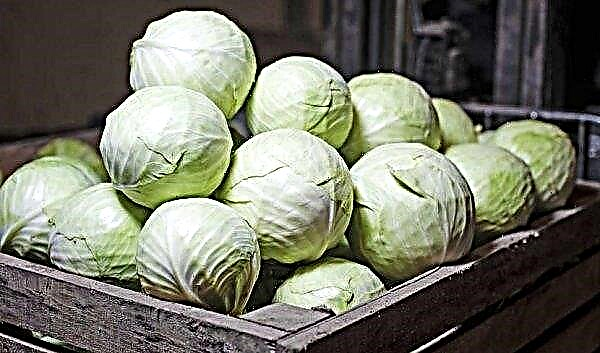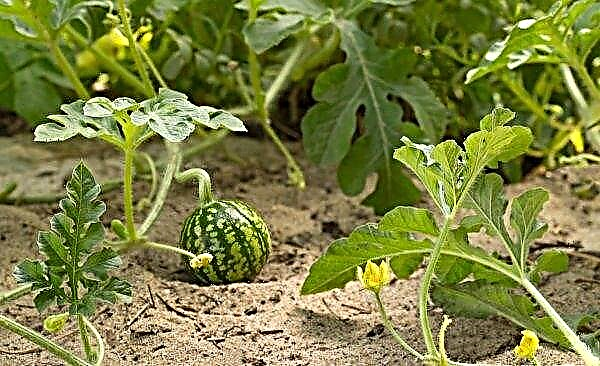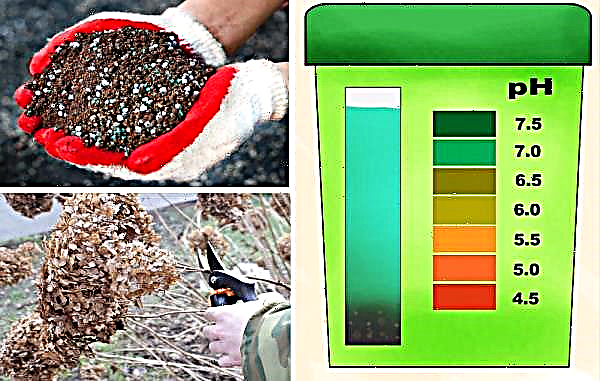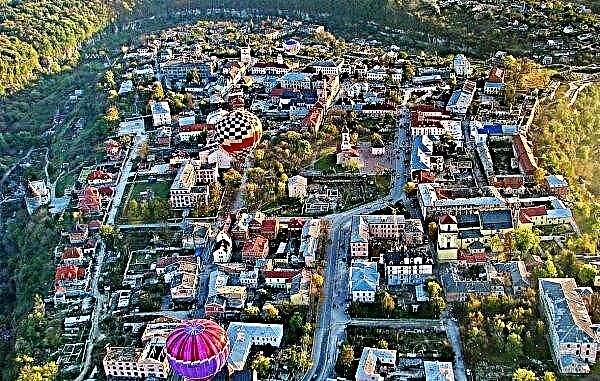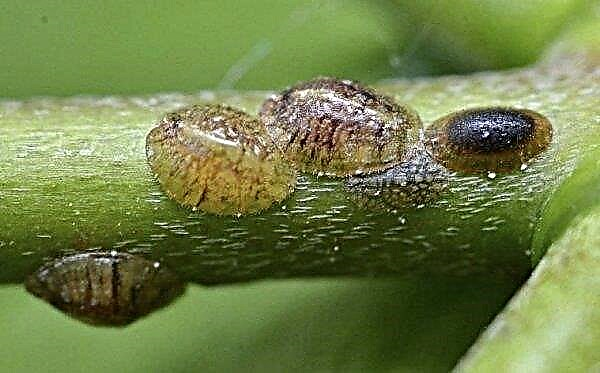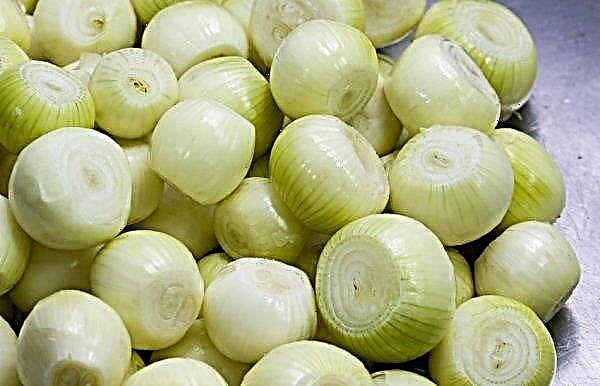Common juniper is a species of coniferous evergreens of the Cypress family, one of the varieties of which is Horstmann. It differs in its original appearance, which makes it very popular in decorative landscaping and landscape design.
Botanical Description
Juniperus communis Horstmann is a perennial evergreen shrub with a pendula-type crown (weeping). The lower creeping shoots are 2 m long, the upper branches grow straight, in the vertical direction, their tops are slightly lowered. With age, the shoots located in the upper part of the plant bend more and begin to hang, and the entire crown becomes spreading, weeping type.
The height of the bush can reach up to 2.5 m, the crown diameter reaches up to 2 m. The plant forms a clear stump, which makes it possible to grow Horstmann as a small tree, giving it the necessary shape by means of pruning.

Annually, the variety adds up to 5 cm in height, and 2 times more in width. After 10 years of life, the plant slows down development, from then on it is considered an adult. Horstmann suffers drought satisfactorily - in such periods he needs the right watering: moderate, but regular, while the moisture should not stagnate in the roots.
Did you know? During the Great Patriotic War, in Crimea, operations of the wounded were carried out under the open sky, in a juniper grove. There were practically no complications caused by infections - the bactericidal properties of the plant are so strong.
The needles are not very long (up to 1–1.5 cm), it is dark green with pointed tips, lives for about 3 years. By the end of this period, it acquires a chocolate-orange hue and begins to fall off - young needles replace it. The bark is light brown.
For a good appearance, the needles need a sufficient amount of ultraviolet light, that is, the green mass grows better and looks in open places where there is enough sunlight. Horstmann tolerates periodic shading normally, but in a constant shadow, the needles become small, lose their density and fade.

The variety is well adapted for the temperate climatic zone; it tolerates winters quite normally up to -30 ° С. In addition, the tops touched by frost are restored within one year. It can grow in one place for more than one and a half centuries, while maintaining a decorative look. A nice addition is the fact that the growth of an adult shrub is minimal, and it does not need forming pruning.
Did you know? Juniper cones are actively used in cooking, for the preparation of sauces, as an integral part of various spices, for baking meat, in confectionery. But the most famous use of cones is as an ingredient in some alcoholic beverages: gin, borovichka vodka.
Fruits of two types: male (microstrobiles) - yellowish, female (cone berries) - elongated or spherical in shape, olive shade, by the time of ripening (autumn 2-3 years) blacken, acquiring a bluish tint, and sometimes a waxy coating. Cones have 3 or 6 scales outside and 2-3 trihedral seeds inside.
Flowering occurs in April-May, in Siberia - May-June. Fruiting occurs in 5–9 years, even after 3–5 years, yields become plentiful. The roots are fibrous type of surface location.
Landing
Horstmann with open roots is planted only in spring, in April-May. In extreme cases, the planting of such plants can be carried out in August or early autumn. To do this, you should choose the time a couple of days after the rain, so that the soil and air are sufficiently moistened, but without excessive moisture.
Seedlings with roots closed in the container are not so demanding on weather conditions and tolerate planting quite normally in spring and autumn, until early November.
Seedling preparation
It is better to buy planting material in a special nursery, there you are more likely to buy a quality seedling. Most often they are sold with a closed root system, in special containers. A sign of the right container is a thin young shoot slightly protruding from the drainage layer.

The root lump of the substrate inside such a pot should be placed tightly, not cranked (this is a sign of drying out). If the young plant is sold with bare roots, carefully study them for lack of breakage, signs of dryness and sufficient moisture.
In addition, you should pay attention to such details:
- healthy, strong needles, shiny and flexible. The needles should hold firmly on the branches when trying to break them off;
- the trunk is straight and healthy, without spots and dry places, uniform color;
- the best seedling age is 3-4 years.
Site selection and preparation
The plant is not too capricious in nature or excessive requirements for the type of soil. However, it grows best on neutral or slightly acidic loams, and even better - rocky sandy loam, well permeable to water, with the same acid-base balance.

Horstmann can take root on calcium soil, but it will look worse. Fruit trees growing nearby, especially apple trees, are bad neighbors, as they can provoke the development of coniferous rust. Waterlogged soil is not suitable for cultivation.
When choosing a place should be guided by such criteria:
- the site should be open, nearby the presence of tall plants or buildings is undesirable;
- it is better that the place is protected from the wind, at least from the north side;
- a nearby (but not in the immediate vicinity) source of water is appreciated.
Landing process
It is better to prepare the soil for spring planting of juniper in the fall. If you have alkaline soil on the site, when digging, 2 buckets of sand and peat per 1 m² are brought into it. The soil can be acidified by adding fallen needles or sphagnum moss to the substrate. In addition, for this purpose, you can apply the addition of 3 tbsp. l / 1 m², ammonium sulfate or potassium.
Important! Magnesium, in its properties and effect on plants, is similar to chlorophyll. So, if you want juniper needles to be beautiful and of good quality, be responsible for making this mineral when feeding.
Juniper planting itself looks like this:
- In the spring, 10–15 days before planting, holes are made at a distance of 1.5–2 m from one another. The width of the landing pit is 50–60 cm, the depth is 70–80 cm.
- It is necessary to prepare a substrate from equal parts of humus, peat, sand and sod land, mix well. For each bucket of the resulting composition add 1 tbsp. l superphosphate and 2 tbsp. nitroammophoski.
- The bottom of each pit is covered with a layer of drainage (15 cm), consisting of expanded clay, chipped tiles or bricks, gravel and sand. You can mix all the components in any proportions, it is desirable (but not necessary) to fill the drainage with a thin layer of coniferous sawdust.
- Lay on top a layer of the substrate you prepared with a thickness of 15–20 cm, and spill it with a solution of potassium permanganate in boiling water (1 tsp. / 5 l. Water). This procedure should be performed three days before the planting date.
- Saplings with an open root system are placed for half an hour in a growth stimulator (Epin, Kornevin, Heteroauxin), then they are lowered into a clay mash and placed vertically in the center of the hole. The plant in the pit is covered with the remains of the prepared soil mixture, ramming it.
- It is necessary to ensure that the root collar is 4-6 cm above the ground. Build a trunk circle within a radius of 40 cm from the trunk, 10–15 cm high, pour 1.5–2 buckets of warm water on each bush. Mulch with peat and coniferous sawdust, the thickness of the layer is 6–8 cm. From above, the area around the trunk and the surrounding area can be covered with pine bark.

Juniper Care
Horstmann is reasonably moderate in his demands for creating the conditions necessary for growth. In the event that you have correctly selected and prepared a place for the plant and took a quality seedling, you will only have to perform the minimum of the simplest care procedures, the description of which is given below.
Video: Juniper planting and care
Watering
An adult plant, in the summer seasons with the usual amount of rainfall, does not need additional watering, although a bucket of water once a week will not hurt. During periods of drought, the shrub is watered after 1-2 days. In addition, the volume of irrigation is increased with the advent of autumn, up to two buckets every 7 days. But the young plant is more demanding on watering. The first 8-9 weeks, the seedling must be moistened in the root zone, 1 bucket every 5 days.
Top dressing
Adult juniper, which is grown on a suitable substrate (sandy loam or loam with a pH of 5.0–7.0), does not need to be fed. If fertilizers were applied during planting, the next time this should be done only after a year.
Important! The needles do not crumble as much as the leaves, so the juniper does not need a lot of nitrogen to grow green mass. In addition, after the middle of summer, this mineral can even be harmful, since the shoots that have started to grow actively do not have time to get stronger before frost and can freeze.
Young shrubs, up to 9-10 years old, are fed according to this scheme:
- At the beginning of spring, a solution of cow manure or poultry is added. Prepare it as follows: 5 liters of excrement bred in 1 bucket of water, mix well and let it brew for 7-10 days. The product will be ready when you smell a pungent characteristic odor. The resulting concentrate is thoroughly shaken and diluted with water (1 liter of infusion / bucket of water per 1 tree) and water the trunk circle.
- The end of March - the beginning of June. Universal remedies for conifers (Kemira Universal 3 tbsp. l / 1 tree), potassium or magnesium nitrate (2 tbsp. l / 1 m²).
- From July to the end of September, magnesium, potassium, phosphorus and iron are used, according to the instructions for the tool.
- After the end of leaf fall. Superphosphate (2 tbsp. l. / 1 plant).

Loosening and mulching
Loosen the soil around the plant after each wateringotherwise, the resulting crust will interfere with normal soil aeration and root respiration, which adversely affects the shrub. Due to the surface location of the roots, the procedure should be performed neatly and to a depth of not more than 7-8 cm.
The trunk circle of the juniper needs to be mulched. For this, leaf litter, sawdust, peat, peel of sunflower seeds, coniferous bark (crushed) are suitable. The main task of the mulch is to retain moisture in the soil around the roots. In addition, this procedure inhibits weed growth.
When Horstmann grows and the ends of its lower branches fall to the ground, there will be no need for mulching, since the green mass of the plant normally holds water in the soil, preventing its evaporation, and inhibits the growth of weed grass.
Pruning
Juniper does not need formative pruning, only sanitary, which is performed with the advent of spring, before the sap flow begins. With a sharp garden knife or secateurs, all diseased, dry, weak and frostbitten branches are removed.

The places of cuts can be treated with garden varieties, and the whole bush with a solution of copper sulfate (1%) or Bordeaux liquid of the same concentration, then sprinkle the plant with sifted wood ash or charcoal.
Important! The formation of the crown of juniper of the Horstmann variety is performed only if you want to give the shrub the appearance of a tree on a stem.
Winter preparations
The frost resistance of the variety allows an adult plant to winter in most of Russia without additional shelter. After abundant watering in the winter, it will be enough to put fresh mulch a little thicker than usual (12-15 cm).
Young shrubs should be covered more thoroughly: In addition to mulch, it will not be superfluous to spud the plant's stem and cover it with spruce branches. In the event that severe frosts often occur in your region, it is better to install arcs and stretch non-woven material on which coniferous branches are laid on top for the first few years.

Possible diseases and pests
The variety has good immunity and is quite resistant to diseases and pests.
However, these plant qualities are fully manifested subject to some simple rules:
- Horstmann should grow away from fruit trees;
- do not fill the plant during irrigation (between procedures, the soil should completely dry);
- plantings should not be too thick.
Did you know? In ancient times, in Russia, people knew about the beneficial properties of juniper and used them. For example, they made dishes in which milk did not curdle even in the heat, without any refrigerators.
For the prevention of diseases, copper treatments are performed. ("Hom", Bordeaux mixture, vitriol) to the swelling of the kidneys. If there are signs of fungal diseases (rusty or white coating, the needles have become brown or black, rot on the shoots, cracks in the trunk), fungicides such as “Fundazol”, “Abiga-Peak”, “Fitosporin-M” are used according to the instructions given in instructions.

Although serious damage to fungal diseases is practically untreatable, and most often you have to remove the bush and burn outside the garden. Then they carry out the treatment with fungicidal preparations of all healthy plants located near the patient, and the earth around.
If pests appear, they should be removed by hand, and the plant should be sprayed with insecticides such as Karbofos or Decis, according to the instructions. Basically, such events are held twice, with a difference of 2 weeks, in June-July.
Also familiarize yourself with methods for the prevention and treatment of diseases and pests of fir, spruce, thuja and pine.
Breeding methods
There are 4 main methods of propagation of juniper, like most conifers:
- vaccination on the standard;
- cuttings;
- layering;
- generative (seeds).
The latter method has a number of disadvantages, among which one can single out the long time required for cultivation, and the fact that the parental traits are very often not transmitted to a new plant.
Video: Juniper propagation by layering
Use in landscape design
Horstmann is great for use as a decorative element of landscaping.
The scope of its application is wide enough, it can give an elegant and unusual appearance to such compositions:
- framing stairs;
- planting in cascades on inclined sections of the garden will help create a visual effect of multi-tiered;
- alpine hill;
- small Japanese and heather gardens;
- in a group composition surrounding a higher coniferous plant (cypress, fir, arborvitae, spruce);
- in the foreground large volume landings.
Did you know? In places where juniper grows, the air is very clean. The fact is that 1 ha of plants emits up to 30 kg of phytoncides daily - this amount is enough to clean a fairly large city of pathogenic microorganisms.
Juniper is also used as a shrub-solitaire. Due to the smell that many insects cannot tolerate, it is advisable to plant a shrub near the arbors located in the garden. The plant also looks great next to small artificial or natural ponds, in addition, such a neighborhood to Horstmann is useful.
It goes well not only with conifers, but also with deciduous species, especially with bright colors (irises, tulips, etc.). The grade is also good in compositions with stones of various sizes, both large and small gray pebbles.

Juniper Horstmann is a representative of conifers with original external data. Such qualities make the variety highly demanded in the decorative landscaping of gardens and parks. And an important advantage of the plant is its unpretentiousness and adaptability to the conditions of rather severe winters.

